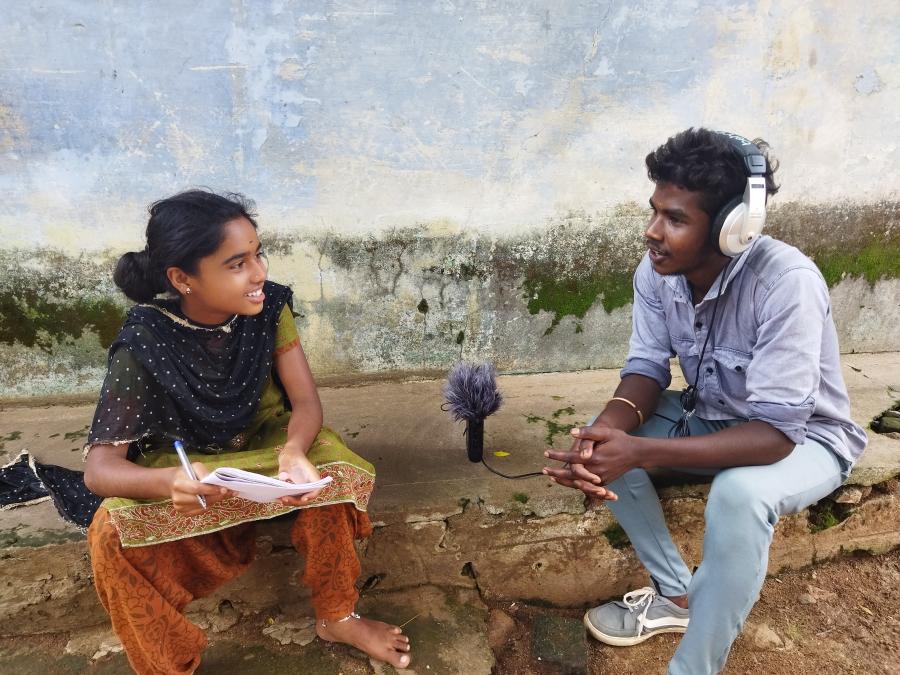There is a problem in the Himalayas potentially more dangerous than the spiraling poverty and environmental degradation. It is that poor scientific research and inappropriate solutions may make the situation worse. This was the warning of many of the 55 scientists and policy makers at the second Mohonk International Mountain Conference last April. "Myth, poor data, and gross generalization" characterize much of the accepted knowledge about the mountains and their impact on lowland areas, according to conference convenor Jack Ives, President of the International Mountain Society. Added to this poor scientific base is the institutional transfer of inappropriate solutions which results in uneven distribution of resources and ignores the needs and knowledge of indigenous peoples.
"The treatment has exacerbated the disease," spoke out Sunderlal Bahaguna, a leader of the grassroots Chipko movement in India, whose presence at the conference was evidence of the attempt to seek out local wisdom and an acknowledgement of the success of small-scale, home-grown, flexible solutions. Mr. Bahaguna criticized ways in which development goals had overshadowed self-sufficiency and local needs. As examples, he pointed to watershed programs to plant pine and eucalyptus which rob water and land to feed industry, and the introduction of a market economy based on rice and apple production which exports resources out of the highland region, while the crates to pack apples use large amounts of precious wood. (In the Gandhian tradition from which he hails, he protested this even in the Shawangunk mountains of New York where the meeting was held by refusing rice and apples with his vegetarian meals.)
According to Mr. Bahaguna, science has not been able to deliver the goods to the Himalayan people. He recommended small-scale industries which address local needs and involve the local population in planning and development. For example, women, "the backbone of the hills," need to have their burden lightened by better access to fodder, fuel and water; and facilities for grinding, dehusking and cooking.
The varying perspectives between donor and recipient have caused distrust in technology transfer. The institutional perspective has been that the problem is too many people; the villagers' perception: that there's not enough food, explained Michael Thompson, co-author of Uncertainty on a Himalayan Scale. He criticized policy makers' use of data to promote solutions only they can supply and thereby maintaining a "North-South division, a one-way flow of charity rather than reciprocal gift exchange." His remedy to the fact that "the Himalayas have been hijacked by the wrong kind of science" was that scientists use qualified judgments within particular contexts and seek local expertise.
Of the large scale development projects, major dam construction received severe criticism. The benefits were described as short-lived and uncertain due to heavy sedimentation of Himalayan rivers. The $2 billion Chisapani Dam in Nepal has an estimated lifespan of only 10 to 100 years, according to hydrologist Richard Kattelmann. And social costs are not computed in the cost-benefit of dams, added N.D. Jayal, former secretary of India's Department of Environment, and currently director of Natural Heritage Group. Speaking against the controversial Tehri Dam in India's Garhwal Himalaya, he noted that it will dislodge villages and destroy important sal forests. "Development should be sustainable and not destroy the life support system," he advised.
Dr. Inger-Marie Bjonness, of the Department of Geography of the University of Oslo, reported on the negative impact on the environment and society by the Kulekhani Dam in Nepal. Not only did it introduce a large foreign population into the region, but the local people have not benefited from the electrification program which is routed to Kathmandu and Terai regions.
One of the most successful development programs is the Nepal-Australia Forestry Project begun in 1975. Professor D.M. Griffin, Project Director and Head of the Department of Forestry at the Australian National University, explained the conditions which led to its success. First of all, the community wanted the project. They found the tree nursery site and constructed it. It is a gradualist approach. Griffin emphasized, expanding no faster than the local community wanted. Yet, in 11 years the program spread from two panchayats to 98, from 100 hectares planted per year to 1,500 per year.
Much of what he discovered goes counter to the perceived wisdom about forestry in Nepal. For example, from interviews with village elders in one region he learned that the forest had not declined and that there had been a contraction of agricultural land. Of the difficulty of establishing correct data he says.
It is extremely hard to ask the right questions. If you ask a peasant what he burns there are ten terms for it. Fuelwood has three Nepali names. Different fuels are used at different times of year. These issues are obvious to the peasant but to someone from Kathmandu or an expatriate…
Experiential learning is the course Professor Griffin recommends. One way to promote better science and more successful projects is to convince donor agencies to start with a clean piece of paper. He discredited applied research as a misconceived strategy. His method, participatory action research is learning from experience, doing research as one carries out the activity.
By example, Professor Griffin challenged criticism of chir pine plantation, which he had found useful as a "psychological nurse crop," due to its easy introduction. Its success, he stated, was in the unplanned subsequent invasion by 64 other species, including more desirable broadleaf trees. Although a "nightmare to the traditional silviculturalist," he pointed out that it allowed local people to choose the wood for the products they want. "This could not have happened through applied research," he asserted.
The needs of the scientific investigators at the Mohonk Conference make a lengthy list, including better maps of resources, more locally trained scientists, more communication across disciplines. The question concerning the development and stability of the region was fairly singular, "Development for whom?" If needs of the people of the mountains are to be met, they must participate in the design of solutions.
Article copyright Cultural Survival, Inc.



